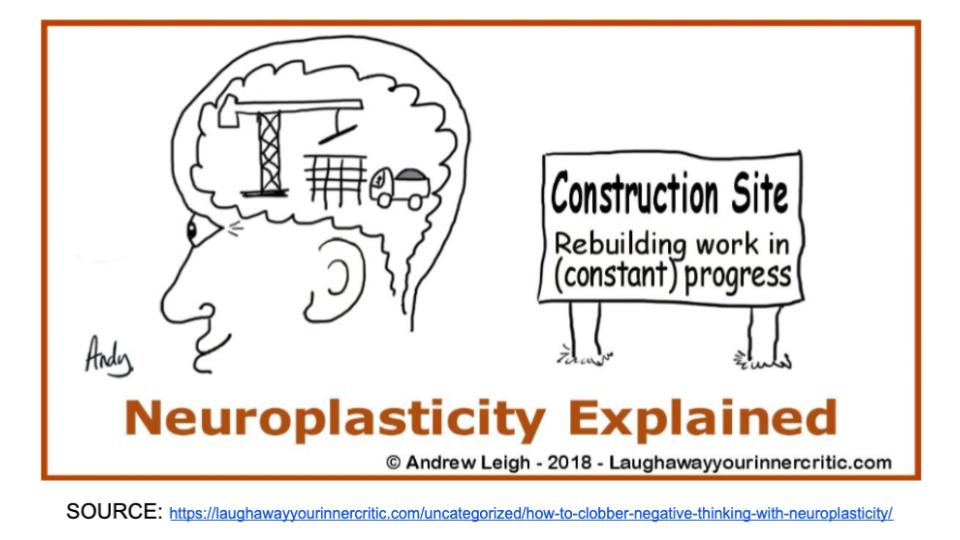Neuroplasticity
“The brain is remarkably plastic. Even in middle or old age, it is still adapting very actively to its environment.”-- K. Fischer, Director, Mind, Brain and Education Program, Harvard University

The human brain remains somewhat a mystery to researchers, but much has been learned over the 50 years. We know that it is one of our body’s largest organs, weighing less than a pound in infancy but growing to perhaps three pounds in adult males and slightly less in females, that it is comprised of mostly water with the remainder a mix of protein and fat, and that the adult brain contains 50 to 100 billion nerve cells.
These cells are neurons, and they act as conveyor belts of information distributed to and from our other organs and muscles. However, these conveyor belts are not fully connected; the tip of each neuron has a synapse (gap), and neurotransmission is the process of a signal crossing the gap and connecting to its neighboring cell. These neurons are held together by glial cells, of which there also are many billions. Most central to our notion of “rewirement”, we now know these glial cells contribute to removing unused neurotransmitter molecules and developing new synaptics. The adult brain continues to create new neuron connections and eliminate others throughout life. It changes over time and adapts to new memories and experiences. By taking control of our thoughts and actions, we can help orchestrate a “rewirement” of our brain!
To do so requires energy, and so the brain uses a far greater proportion of the oxygen and glucose in our body than its meager contribution to our overall weight might suggest. Our transmitters work tirelessly to control our physical state (breathing; heartbeat), our intellectual state (concentration; learning), and our emotional state (anger; happiness). The human brain reorganizes its pathways based on changes in our physical, intellectual and emotional state -- weakening or strengthening some neurons, pruning away some synaptic connections, and even creating some new neurons. While only an MRI scan can visualize these changes, we all are capable of experiencing and benefitting from them.
That is known as neuroplasticity. It paints a very optimistic and opportunistic view that brain tissue can change and even grow, ideas that were rejected for centuries by doctors and scientists who believed the brain was a fixed structure -- and therefore that “you cannot teach an old dog new tricks”. We now know better, and as a result “rewirement” opportunities abound. Healthline suggests six activities that can increase positive neuroplasticity, and the Eco Institute claims “1,000s of studies” indicate the best activity may be the final one listed below:
- Play video games
- Learn a new language
- Make some music
- Travel
- Exercise
- Make some art
- Meditate.
For more information on neuroplasticity and how to use it to your advantage, start here:
- https://www.edutopia.org/neuroscience-brain-based-learning-neuroplasticity
- https://www.verywellmind.com/
- https://www.frontiersin.org/articles/10.3389/fpsyg.2017.01657/full
- https://positivepsychology.com/neuroplasticity/
- https://www.healthline.com/health/rewiring-your-brain
- https://academic.oup.com/brain/article/134/6/1591/369496 (“Harnessing Neuroplasticity”)
- https://eocinstitute.org/meditation/
For more information on how we apply this science, click on the "Our Rewirements" tab above.
